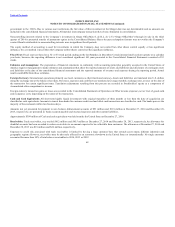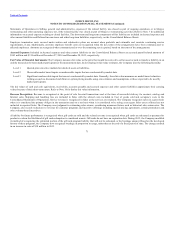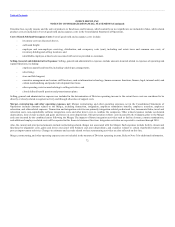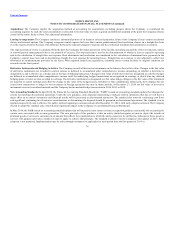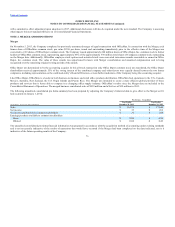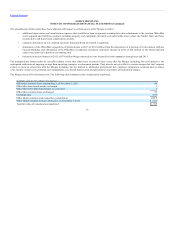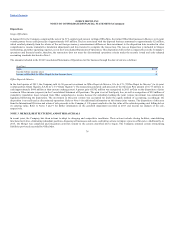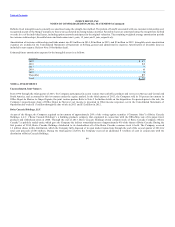OfficeMax 2014 Annual Report Download - page 76
Download and view the complete annual report
Please find page 76 of the 2014 OfficeMax annual report below. You can navigate through the pages in the report by either clicking on the pages listed below, or by using the keyword search tool below to find specific information within the annual report.
Table of Contents
The Company applies the acquisition method of accounting for acquisitions, including mergers where the Company is considered the
accounting acquirer. As such, the total consideration is allocated to the fair value of assets acquired and liabilities assumed at the point the Company obtains
control of the entity. Refer to Note 2 for additional information.
The Company conducts a substantial portion of its business in leased properties. Some of the Company’s leases contain escalation
clauses and renewal options. The Company recognizes rental expense for leases that contain predetermined fixed escalation clauses on a straight-line basis
over the expected term of the lease. The difference between the amounts charged to expense and the contractual minimum lease payment is accrued for.
The expected term of a lease is calculated from the date the Company first takes possession of the facility, including any periods of free rent and any option
or renewal periods management believes are probable of exercise. This expected term is used in the determination of whether a lease is capital or operating
and in the calculation of straight-line rent expense. Rent abatements and escalations are considered in the calculation of minimum lease payments in the
Company’s capital lease tests and in determining straight-line rent expense for operating leases. Straight-line rent expense is also adjusted to reflect any
allowances or reimbursements provided by the lessor. When required under lease agreements, estimated costs to return facilities to original condition are
accrued over the lease period.
The Company records all derivative instruments on the balance sheet at fair value. Changes in the fair value
of derivative instruments are recorded in current income or deferred in accumulated other comprehensive income, depending on whether a derivative is
designated as, and is effective as, a hedge and on the type of hedging transaction. Changes in fair value of derivatives that are designated as cash flow hedges
are deferred in accumulated other comprehensive income until the underlying hedged transactions are recognized in earnings, at which time any deferred
hedging gains or losses are also recorded in earnings. If a derivative instrument is designated as a fair value hedge, changes in the fair value of the instrument
are reported in current earnings and offset the change in fair value of the hedged assets, liabilities or firm commitments. Historically, the Company has not
entered into transactions to hedge its net investment in foreign operations but may in future periods. At December 27, 2014 the fair value of derivative
instruments were not considered material and the Company had no material hedge transactions in 2014, 2013 or 2012.
In April 2014, the Financial Accounting Standards Board (the “FASB”) issued an accounting standards update that changes the
criteria for reporting discontinued operations. Under the new guidance, only disposals representing a strategic shift in operations that has (or will have) a
major effect on an entity’s operations and financial results will be presented as discontinued operations. The standard also removed continuing cash flows
and significant continuing involvement as considerations in determining if a disposal should be presented as discontinued operations. The standard is to be
applied prospectively and is effective for public entities beginning in annual periods after December 15, 2014, with early adoption allowed. The Company
elected to adopt this standard early, which had no significant impact in the Company’s Consolidated Financial Statements.
In May 2014, the FASB issued an accounting standards update that will supersede most current revenue recognition guidance and modify the accounting for
certain costs associated with revenue generation. The core principle of this guidance is that an entity should recognize revenue to depict the transfer of
promised goods or services to customers in an amount that reflects the consideration to which the entity expects to be entitled in exchange for those goods or
services. The guidance provides a number of steps to apply to achieve that principle. The standard is effective for the Company’s first quarter of 2017. Early
adoption is not permitted. Implementation may be either through retrospective application to each period from the first quarter of 2015 or
74






